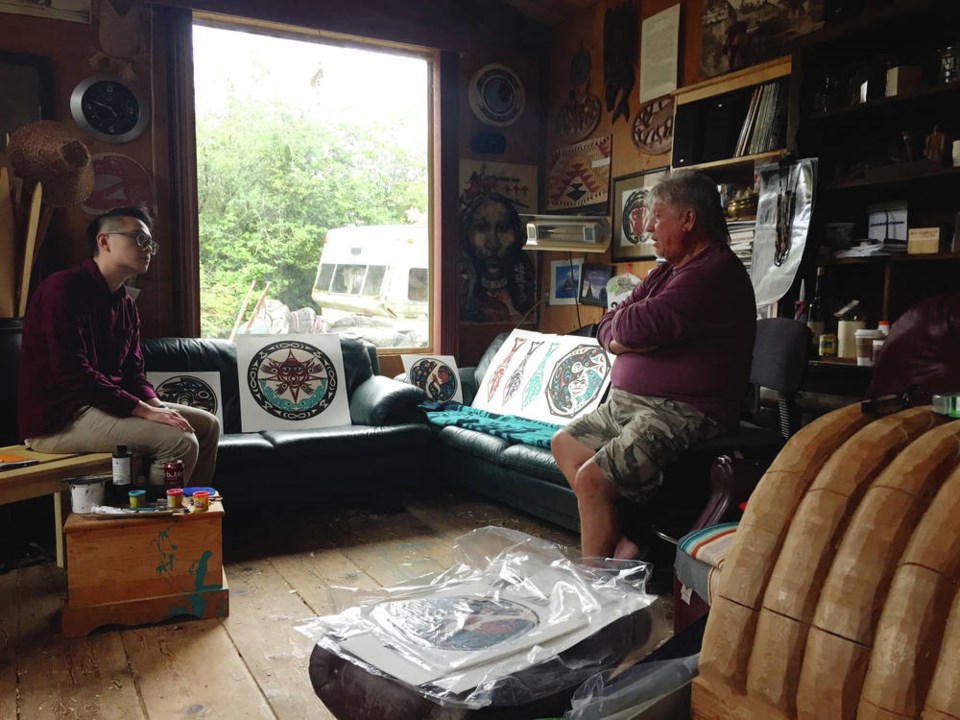When it comes to reconciliation with Indigenous communities, Lucas Hung thinks the biggest stumbling block for many non-Indigenous people is not knowing how to engage respectfully.
“I think there’s something scary about that word. I can say I was a bit scared of that word. And some of my friends were too, because we just didn’t want to do anything wrong. We didn’t know where to start,” said the University of Victoria music student, who co-ordinated the creation of a series of video interviews over the past 15 months with four W̱SÁNEĆ members — two artists and two language-revitalization advocates — delving into what reconciliation means.
Hung hopes the online resource, called Taking Reconcili-Action, will inspire others to do their own first-hand learning about Indigenous cultures and what reconciliation looks like.
For the project, Hung connected with John Elliott, a key figure in the revitalization of the SENĆOŦEN language, and his son Pena Elliott, also a language-revitalization advocate, as well as Tsartlip master carver Charles Elliott and Salish artist Chris Paul.
He sought to answer some big questions: What does it mean to be an Indigenous person living in Canada? How are W̱SÁNEĆ traditions and culture still alive today? And how can non-Indigenous people better understand Indigenous peoples and create meaningful connections with them?
With the help of friends Leona Lam and Kevin Butchart, Hung created the video series, interspersed with historical context about colonization, the dispossession of land and the loss of language and culture.
Hung said he was inspired to create the project after there was a shift in the public school curriculum that put a greater emphasis on learning about Indigenous cultures and histories. As a high school student, he saw his teachers struggle with how to begin teaching the subject.
The project, funded in part by the Heritage B.C. Heritage Legacy Fund, includes a guide for teachers to lead students through their own Reconcili-Action projects.
“We wanted to show teachers, if you want to do something like this, here’s all the things that you can learn from just having a single conversation,” Hung said.
The guide provides tips on what to learn about a person or a community before asking for an interview, how to build relationships and how to conduct oral history interviews. It emphasizes the importance of considering what the interview subject will gain from giving their time.
Elliott, whose W̱SÁNEĆ name is J’SINTEN, said he appreciated Hung reaching out to him to learn about W̱SÁNEĆ culture, history and traditions. And he hopes other young people will learn something from the project.
“One of these days, those young people might be in government, one of those people might be a policy maker, for example, and having that understanding of what our homelands and territories mean to us might help them to better understand our people,” he said. “And I think that’s a real good thing as far as reconciliation goes.”



